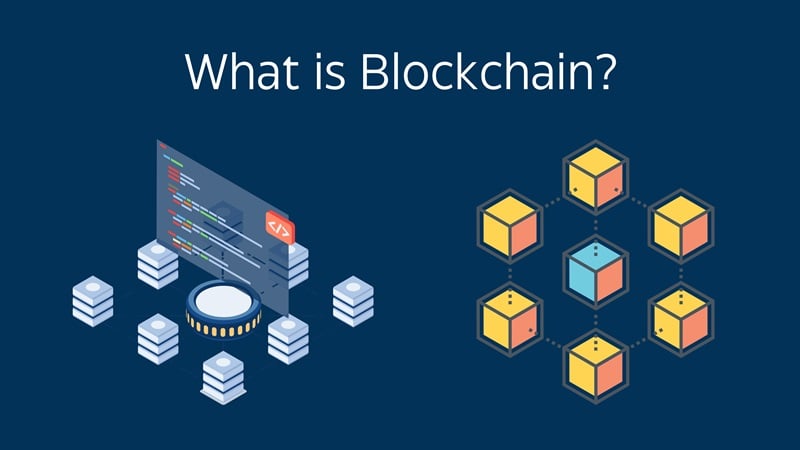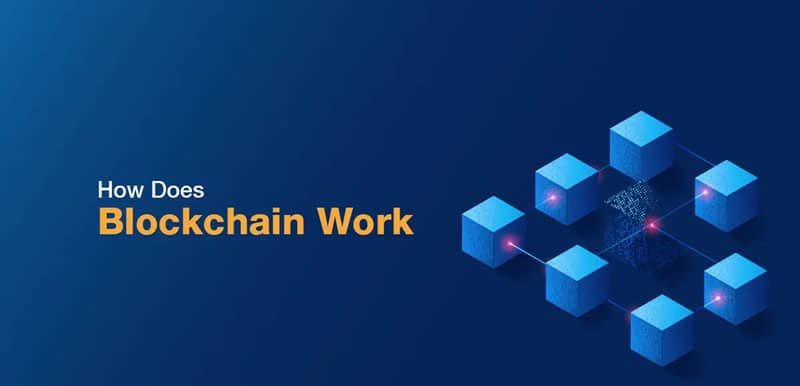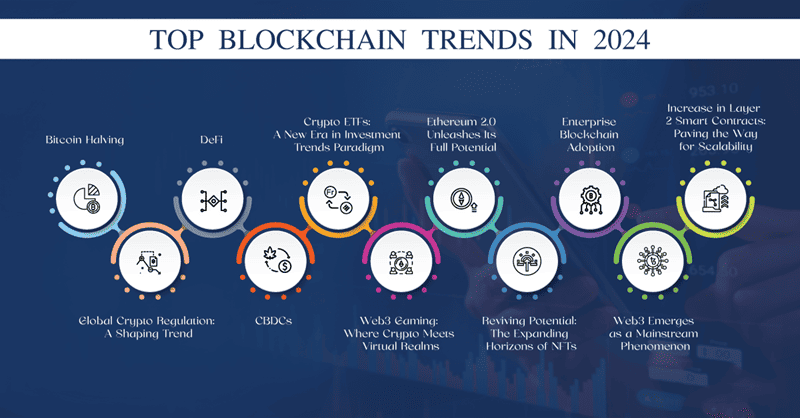You’ve heard the buzz around blockchain but might find yourself scratching your head, wondering, What is blockchain and how does it work? I get it. It’s like a digital puzzle everyone is trying to solve. But today, the fog clears. Think of blockchain as a safe, public notebook where every note you write is seen and confirmed by a crowd of people. No one owns this notebook, but everyone trusts it, because once something is written, it can’t be erased or changed—if someone tries, the crowd spots it right away. Imagine how that changes the game for keeping track of who sent what to whom, without the fear of cheats and lies sneaking in. Let’s break down these digital blocks together, from their basics to how they’re shaking up our world.
The Building Blocks of Blockchain Technology
Understanding Blockchain Fundamentals
Let’s break down how blockchain works. Picture it as a digital book. Each page in this book is a “block”. These blocks store batches of info, and they all link together in a “chain”. This is a vital part of the blockchain, and it’s why we call it that.
Blockchain forms the backbone of crypto like Bitcoin. It’s a shared, unchangeable ledger for recording the history of transactions. This ensures everything is open and nothing can be changed or hacked. Think of it like a record that’s out in the open, clear for everyone to see.
When someone makes a transaction on the blockchain, it gets sealed into a block. Once the block is full of transactions, it gets linked to the last block in the chain. This forms a timeline of data that’s cemented in the history of the blockchain.
How do we make sure all this data is legit? The next phrase has four big words but holds a simple meaning. See, “blockchain consensus mechanisms” are rules. They help the network agree on the info in the blocks. So, only the correct data makes it into the ledger.
What’s awesome about blockchain is how sturdy and secure it is. Have you ever made something out of Lego, so strong that no part would come off? That’s how blockchain works. It’s like every transaction is snapped into place, strong and solid. This is due to “blockchain encryption methods” which scramble the transaction info so only certain people can read it.
Principles of Decentralized Ledger Technology
Now, there’s more to the blockchain than just keeping data safe. It uses a peer-to-peer network, like friends swapping game cards directly, with no one else messing with the trade. Blockchain lets people send money or info directly to each other, with no banks or companies in between.
This network is a bunch of computers, called “nodes”. Each one has a full copy of the blockchain and follows the same rules. If someone tries to trick the system, they’d have to fool all the nodes. But because all the nodes talk to each other, it’s really hard to do that.
Blockchain’s power also lies in its “immutability feature”, which is a fancy way of saying ‘once something is written, it’s written’. Imagine writing with a permanent marker on a poster. It won’t come off, right? In blockchain, once a block is added, the data can’t be erased or changed.
Now, you’ve probably heard of “public versus private blockchains”. The public ones are like a public park – open for anyone to join. But private blockchains are more like a private party – you need an invite to get in. Both types offer benefits, depending on what you need them for.
In our world today, understanding blockchain matters. It’s not just for tech wizards or money experts. It’s for anyone interested in how the future of keeping track of things will change. And trust me, it’s going to be big.
How Blockchain Revolutionizes Security and Transactions
Blockchain’s Immutability and Encryption Methods
Imagine a book where once you write something, you can’t erase it. That’s how blockchain’s immutability works. It keeps data safe forever. With blockchain, you share info across a network of computers. This makes sure no single person can mess with the data. Every “block” of info gets locked by a super tough math puzzle. This is part of blockchain encryption methods. It takes a lot of work to lock these blocks. But once locked, they’re safe.
Now, think of these puzzles like super secure locks that keep the data safe. These locks are solved by people we call miners. They use powerful computers to solve the puzzles. When they solve it, the block gets added to the chain. A new, secure page gets added to our book. And the puzzle makes sure it’s hard for anyone to cheat.
These blocks have lists of transactions. They work like chapters in our data book. They are public, which means anyone can check them out. But, only miners can add new blocks to the blockchain. This keeps our digital ledger honest.
Validating Secure Transactions with Blockchain Consensus Mechanisms
Have you ever made a deal and shook on it? That’s a bit like how blockchain makes sure everyone agrees on the data. This is called “consensus mechanisms”. It’s how a network of computers agree on adding new stuff to the blockchain. Proof of work and proof of stake are two ways they do this.
Proof of work is like saying, “I did a bunch of hard work, so what I say goes.” It needs a lot of computer power. Proof of stake is more like, “I own a big part of this, so I promise to play nice.” It doesn’t need as much power and is a bit greener.
Both methods help keep blockchain fair and secure. They check many times to make sure a transaction is good before adding it. This stops cheating, like spending the same money twice. That’s what we call double spend.
So, think of blockchain like a game with rules that everyone playing must follow. These rules help everyone trust each other. Even people who don’t know each other can make deals. They feel safe doing it, thanks to blockchain. This trust is huge for businesses. It means they can work together without worrying. They know the blockchain is watching everything.
Blockchain can help with lots of stuff, from keeping our food fresh to banking. It’s all about staying honest and safe. The tech grows and gets better. It’s changing the way we deal with info and each other. And it’s pretty cool, right?
Enhancing Business and Governance with Blockchain
Smart Contracts and Blockchain in Business
Imagine you have a magic notebook. Whatever you write in it comes true. Now, let’s talk about smart contracts. They work like magic notebooks for business deals. When conditions are right, they self-execute or happen on their own. This means when you and someone else agree to a deal, smart contracts make it happen automatically when the deal’s terms are met.
Businesses love this feature. It cuts out the middleman, saves time and reduces mistakes. Smart contracts live on the blockchain. This is a network that shares the magic notebook with many computers around the world. Because it’s shared, no one can change what’s written without everyone else knowing.
Smart contracts are key in blockchain for business. They enforce agreements in code, which means fewer errors and less fraud. For example, when you buy a song online, a smart contract can make sure you pay and the artist gets their cut instantly. No waiting, no mistakes.
Blockchain’s Role in Supply Chain Management and Data Integrity
Now, let’s hop into how blockchain keeps track of things like a supercharged inventory list. Blockchain shines in supply chain management. It creates a record of every item’s journey, from making to delivery. Trust is big here. Companies can see everything that happens to their products. So, no more lost items or phony goods sneaking in.
Blockchain also guarantees data integrity. This means that once something is written on the blockchain, it can’t be messed with. Like carving words into stone, but way cooler. This is huge for keeping records safe and sound.
Have you ever played a game of telephone? By the end, the message is nothing like it started. The blockchain stops that from happening with product info. It’s accurate from start to finish. So, everyone from the maker to the buyer can trust the product story. No mix-ups.
In short, smart contracts make business easier and more honest. Blockchain keeps product histories safe and true. This helps businesses run smoother and customers stay happy. It’s pretty amazing what this technology can do. And we’re just getting started with finding new ways to use it!
The Future Landscape of Blockchain
Navigating Public versus Private Blockchain Dilemmas
When you dive into blockchain, you hit a fork in the road. Do you go public or private with your blockchain? A public blockchain is like a big, open party. Anyone can join in, see the ledger, and add new blocks. Bitcoin uses this kind of system. It’s all about openness and no one being in charge. On the other hand, a private blockchain is like a VIP party. It’s invite-only, and the host decides who gets in. These are great for businesses that need to keep things under wraps but still want the blockchain perks.
For example, if a bank’s using blockchain, they might choose private. They need to make sure client info stays safe and secure. That’s where blockchain’s security shines. It uses tough puzzles called cryptography that keep hackers away.
Blockchain Scalability and its Broadening Horizons
Have you ever tried talking in a crowded room? It can be tough to get heard, right? That’s a bit like the struggle blockchain faces as it grows. This issue is called scalability, and it’s a big deal. It’s all about handling more and more people using the system without slowing down. Right now, we have two main ways to confirm new blocks: proof of work and proof of stake.
Proof of work makes computers solve hard math to add a block. It’s like a math race, and the winner gets to add their block and earn some digital cash, or cryptocurrency. But it’s slow and uses a lot of power. Proof of stake is different. It picks the next block based on who has the most coins. It’s like if you had more game tokens, you’d have a better chance to play next. It can be faster and uses less energy.
As we look to the future, blockchain is branching out. It’s not just for cryptocurrency anymore. People are using it to track things in supply chains and to keep personal data private. And the future? It’s looking wide open. We might see blockchains that are even faster, greener, and more woven into everyday life. From banking to voting, blockchain’s trusty ledger could make a lot of things more secure and fair.
So, when we talk about the future of blockchain, think big. This tech is still young, but it’s got a lot of room to grow and shape how we handle digital info. It’s all about creating trust without needing someone in the middle to manage it. The more we learn and improve blockchain, the better it will get for everyone using it.
In this post, we’ve dived deep into blockchain’s world, from its basic blocks to the mighty waves it’s creating in business and beyond. We started by laying out the core parts of blockchain technology and what makes it special. Next, we looked at how it changes the game for security, making data unchangeable and ironclad. Then, we saw its power in business, like with smart contracts and in tracking items from start to finish, ensuring nothing gets tampered with.
In our final thoughts, we can see how blockchain isn’t just a techy buzzword; it’s a robust tool reshaping how we handle data and transactions. Looking ahead, we’re facing choices between public versus private blockchains and pondering how we can grow without losing a beat. This isn’t just about today; it’s about paving the road for a secure, trusted tomorrow. Blockchain’s potential stretches as far as we dare to dream. Keep your eyes on this space; it’s rocketing forward, and you won’t want to miss where it’s headed next.
Q&A :
What Exactly Is Blockchain Technology?
Blockchain is a distributed database that allows for secure, transparent and tamper-proof transactions. Each block in the chain contains a number of transactions, and every time a new transaction occurs on the blockchain, a record of that transaction is added to every participant’s ledger. This decentralized database managed by multiple participants is known as Distributed Ledger Technology (DLT).
How Does Blockchain Function Step-By-Step?
The working of blockchain can be broken down into several key steps:
- A transaction is requested.
- The transaction is transmitted to a network of peer-to-peer computers scattered across the world.
- The network of nodes validates the transaction using known algorithms.
- Once verified, the transaction is combined with other transactions to create a new block of data for the ledger.
- The new block is then added to the existing blockchain, in a way that is permanent and unalterable.
- The transaction is complete.
Can Blockchain Transactions Be Reversed?
No, transactions on the blockchain are designed to be irreversible and are permanently recorded on the ledger. Once a transaction has been added to the blockchain, it cannot be reversed or altered, which is one of the features that provides security and trust in the system.
What Makes Blockchain Secure?
Blockchain is considered secure because of its decentralized nature and cryptographic algorithm. It uses encryption to ensure that data can only be accessed by authorized users with the correct decryption key. Additionally, since each block in the blockchain is connected to the blocks before and after it, tampering with a single record would require altering the entire chain in multiple ledgers, which is virtually impossible due to the computational power needed to do so.
In What Ways Is Blockchain Used Beyond Cryptocurrency?
While blockchain is famously known as the underlying technology behind cryptocurrencies like Bitcoin, it has many other uses including:
- Supply chain management, for tracking the production, shipment, and delivery of products transparently.
- Smart contracts, which are programmable contracts that execute when certain conditions are met.
- Voting systems, offering a high level of security, transparency, and immutability.
- Identity management, providing a secure and unforgeable way of handling identities digitally.
- Record keeping, such as in real estate and healthcare, where records can be securely and permanently stored.



